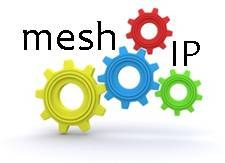Desktop virtualization is the use of several virtualization technologies, either together or separately. Let’s look at each of these cases in turn: When “desktop virtualization” is used to describe making it possible for people to access a physical or virtual system remotely, access virtualization technology is used to capture the user interface portion of an application. It is then converted to a neutral format and projected across the network to a device that can display […]
Citrix
One of the main reasons for deploying desktop virtualization is the security advantages it can provide, such as keeping sensitive data off the endpoint, according to Citrix. And Citrix is practicing what it preaches at its Ft. Lauderdale, Fla., headquarters where employees, for example, use the Citrix virtualization product Citrix Receiver for smartphones and tablets. Citrix Receiver brings full-fledged desktop apps to smartphones and tablets “It’s required to access some systems such as SAP,” says […]
If potential cost savings are driving your desktop virtualization decision, beware the ROI killer: Over-provisioning. Over-provisioning is a nice way of saying you’re throwing money away. That could happen in a variety of forms, such as buying infrastructure that it better suited for a much larger company, planning for growth that doesn’t happen, or not doing your homework on what other technology you’ll need to support virtualization. But fear of wasteful spending shouldn’t stop you […]
VDI can simplify the tasks that make desktop administrators hate their lives — the one-by-one operating system upgrades, Windows patch management, client hardware failures and end-user mishaps. But virtual desktops won’t solve any problems without proper planning and infrastructure. In fact, many virtual desktop infrastructure (VDI) proofs of concept fail because of infrastructure, said Tom Scanlon, CIO of the Massachusetts College of Pharmacy and Health Sciences (MCPHS). When MCPHS explored a move from physical desktops […]
The desktop virtualization market was chugging along at a decent albeit unspectacular pace before Apple’s iPad arrived and helped crystallize the Bring Your Own Device (BYOD) concept. Since then, the iPad has become the main onramp for companies looking to mobilize their work forces through the use of virtualization. Executives were the first to bring the iPad into the workplace, but before long all types of employees were clamoring for the ability to access corporate […]
Despite years of marketing pressure and products that are simpler to use and more widely available, desktop virtualization hasn’t taken off to the extent that vendors and analysts expected even a few years ago. The bring-your-own-device movement among end users, on the other hand, has lit a fire under the market for mobile device virtualization. A survey released last month by telecommunications giant Mitel showed 90 percent of respondents expected virtualization to become more important […]
2010 was the year “cloud computing” became colloquialized to just “cloud,” and everyone realized “cloud,” “SAAS” and all the other xAAS’s (PAAS, IAAS, DAAS) were all different implementations of the same idea — a set of computing services available online that can expand or contract according to need. Not all the confusion has been cleared up, of course. But seeing specific services offered by Amazon, Microsoft, Oracle, Citrix, VMware and a host of other companies […]
Citrix CTO Simon Crosby looks back at 2010 in the cloud computing sector–and ahead at what 2011 may bring–and isn’t very comfortable with a number of things emerging on the security side of that very hot business. Crosby has become a go-to resource for knowledge in virtualization, cloud computing and data security. He was founder and CTO of XenSource prior to its acquisition by Citrix for $500 million in 2007. Previously, Simon was a principal […]








